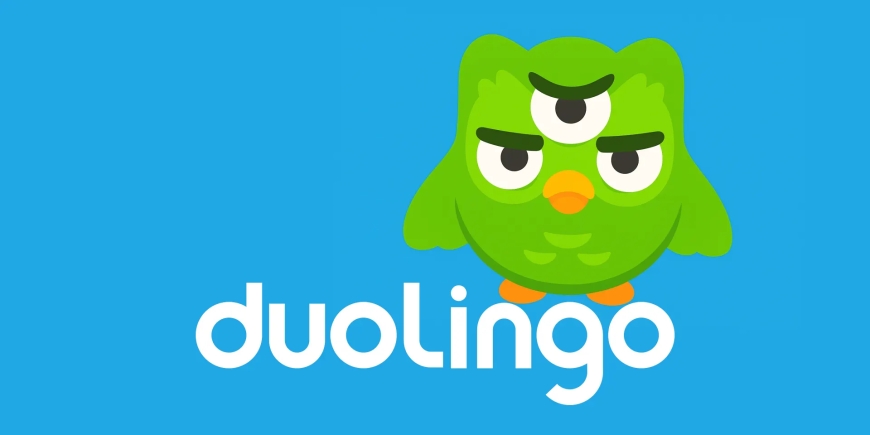Case Study: How Duolingo Keeps Users Addicted to Daily Learning
Duolingo cracked the code on daily learning habits. This case study shows how they keep millions coming back without being annoying.

The Daily Learning Problem
Most learning apps die fast. People download them excited, use them twice, forget they exist. Duolingo somehow got 500 million users doing daily learning consistently. That's not luck - it's smart design this case study breaks down.
The core challenge - making daily learning feel rewarding instead of like homework. Educational apps traditionally sucked at this. They were either too game-like (not effective) or too serious (not sticky). Duolingo found the middle by treating user psychology as seriously as language pedagogy.
Their big insight? Daily learning works when it's ridiculously easy to start and genuinely rewarding to finish. Most apps make beginnings hard and endings unsatisfying. Duolingo flipped that completely through their case study-worthy design choices.
How Duolingo Hooks You
Streak Psychology: The green owl guilts you into daily learning by tracking consecutive days. Lose your streak, lose your progress representation. Sounds simple but it's brutally effective. Users report feeling genuinely upset breaking streaks of 100+ days. That emotional investment keeps people coming back when motivation dies.
Micro-Lessons: Five minutes max per session. Duolingo realized daily learning habits beat marathon sessions. Their case study found something interesting. People who practiced just 5 minutes every day learned more than those who spent an hour only on weekends. Doing a little every day works better than cramming. Consistency beats intensity when learning a language.
Every answer gives instant feedback. Get it right? You hear a confirmation sound. Get it wrong? You hear a correction and a short explanation. This helps you learn as you go, without guessing.
Social Pressure: Friend leaderboards, public profiles, streak sharing. You're not just learning for yourself anymore. This case study element shows how Duolingo weaponized social comparison to drive daily learning engagement without feeling sleazy about it.
Progressive Difficulty: Lessons start stupidly easy. "El niño." Congrats, you speak Spanish! This builds confidence fast. Then difficulty increases so gradually you don't notice getting challenged. By the time daily learning gets hard, you're invested enough to push through.
Character Building: That owl has personality. The notifications are funny, not corporate. "These reminders don't seem to be working. We'll stop sending them." That's manipulation but honest manipulation. Users appreciate the self-aware humor around pushing daily learning.
What Makes This Case Study Different
Duolingo's approach works because they obsess over behavioral data. Every feature gets A/B tested constantly. This case study shows a company that treats user psychology like a science, not guesswork.
They discovered daily learning sticks when sessions end on success, not failure. So lessons are calibrated to be achievable. You close the app feeling smart, not defeated. That positive association brings you back tomorrow.
The free model is genius too. You can do daily learning forever without paying. Premium just removes annoyances and adds features. This case study proves freemium works when the free version is genuinely valuable, not a teaser.
Push notifications are carefully tuned. Too many, people disable them. Too few, they forget. Duolingo found the sweet spot - one reminder daily, with funny copy that doesn't feel naggy. Their case study data on notification timing and tone is probably worth millions.
Results That Actually Matter
The numbers are nuts. Users who maintain daily learning streaks of 7+ days have 70% higher completion rates. That's the streak psychology working exactly as designed in this case study.
Duolingo's retention beats every other education app by massive margins. 30-day retention around 20% sounds low until you realize most education apps are under 5%. For daily learning apps, that's exceptional.
Revenue grew past $500 million annually with 5+ million paying subscribers. But the real win is the 500+ million users doing daily learning for free, many for years. That's culture-shifting scale.
Conclusion
Duolingo's case study proves daily learning can be genuinely addictive without being exploitative. They engineered habit formation through behavioral psychology, then wrapped it in enough charm that users don't feel manipulated. The result - millions of people doing something hard (learning languages) consistently for years. That's product design at its finest, and every app trying to build habits should study how they pulled it off.
What's Your Reaction?
 Like
0
Like
0
 Dislike
0
Dislike
0
 Love
0
Love
0
 Funny
0
Funny
0
 Angry
0
Angry
0
 Sad
0
Sad
0
 Wow
0
Wow
0
























































































































































































